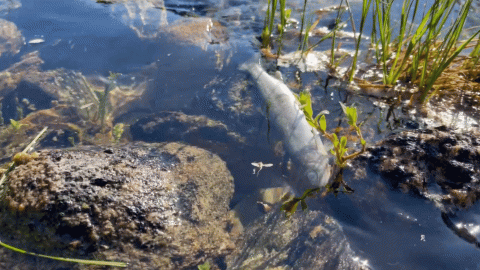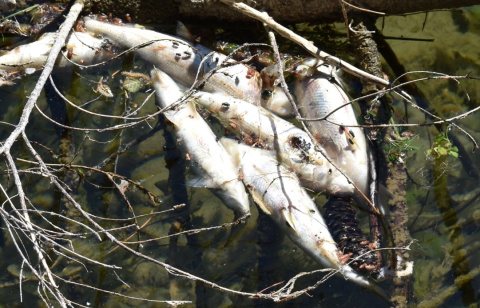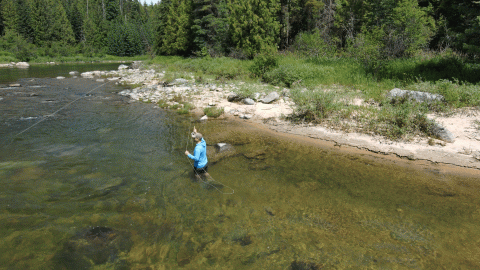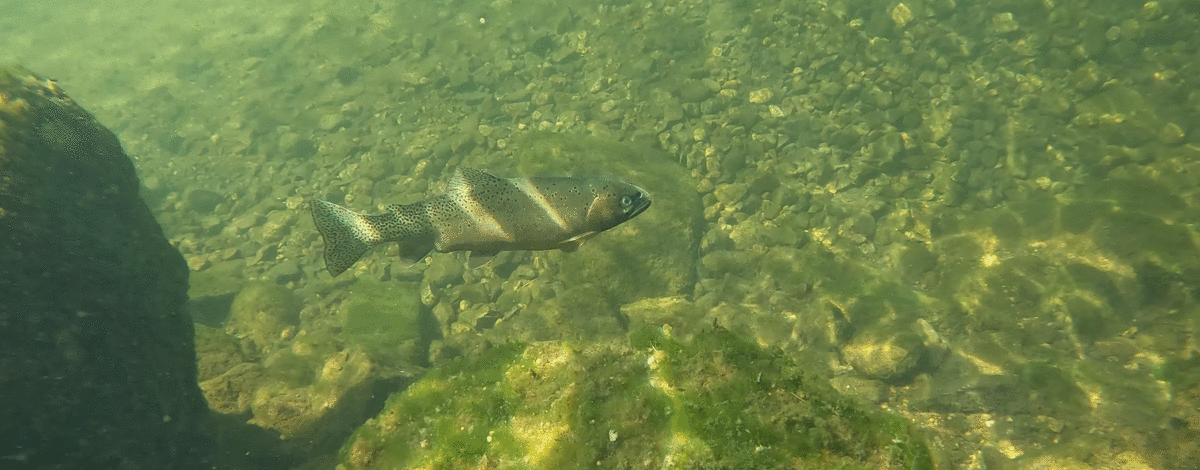Chaco tans, peeling skin and raccoon eyes from sunglasses – yes, the summer sun is bearing down on Idaho. And, humans aren’t the only ones feeling its effects.
There’s no denying that the dog days of summer change the daily life of a trout or any other coldwater fish. Earlier in the season, the entire stream was a playground for trout, gushing with cool, clear water from the snow-packed mountains. July and Aug. often bring a different set of conditions for coldwater fish that causes them to seek out remaining areas of cool water.

Thankfully, coldwater fish have developed strategies for coping with warm summer water temperatures. When the heat sets in and lake or stream temperatures climb into the upper-60s and beyond, trout are uncanny in their ability to find places to cool off.
In healthy streams, these areas of refuge can be groundwater seeps, mouths of tributaries, deep pools, among other things. In most lakes, fish can simply drop a little deeper to find cooler water. Whatever the source, fish know where to find cold water when they need it, even if it requires moving long distances.
Coldwater fish can generally withstand warm temperatures for short durations of time, but if the warm temperatures persist, habitat becomes unsuitable and can cause mortality for fish that are unable to find refuge.

Of course, there are limits to the ability of coldwater fish to withstand the heat of summer, and those are most often seen in less healthy streams that simply don’t have adequate areas of coldwater refuge.
One such example in the Idaho Panhandle is Priest River. Although at first glance Priest River appears to have all the makings of a good trout stream, it lacks in cold water during the heat of summer primarily due to human changes to the river and warm surface water from Priest Lake that feeds the river. And, with hotter summers becoming more common, conditions are becoming even more limiting for coldwater fish.

During the heatwave of summer 2021, Priest River water temperatures exceeded lethal levels for most coldwater fish species for an extended period of time; during the hottest days, water temperatures in parts of the river even exceeded 80 degrees! With limited access to nearby coldwater refuge, the end result was a fish kill in parts of the river.


The fish kill was a stark reminder of something already known about Priest River – it gets hot, too hot, during the summer months. Priest River is classified as “temperature-impaired” under the Clean Water Act.
Priest River is home to a variety of fish species, including westslope cutthroat trout, bull trout and mountain whitefish. The bull trout seasonally migrate in from Lake Pend Oreille, as do some of the cutthroat, while the whitefish are regular river residents. However, because of the river’s temperature limitations, these fish species occur at very low densities relative to other nearby waters.
Thankfully, most rivers in the Panhandle don’t share in the woes of Priest River, and despite the unrelenting summer sun, fish are resilient and can usually find the habitat they need to persist, just as their predecessors did.
What does it mean for fisherman?
Just because it’s hot outside doesn’t mean fisherman shouldn’t grab their fishing gear and wet a line in their favorite hole. They may just need to change up their tactics a bit.

When the heat is on, the bite slows down, so early-mornings are typically best while the water is still cool from the overnight drop in temperatures.
The survival rate of trout released by anglers declines when water temperatures are warm, but angler catch rates are also nearly 80% lower when the rivers heat up. So, while fishing during the heat of summer may negatively affect some individual trout, the populations at-large are unaffected because most fish are never caught.
We’ve done studies specifically on this topic. For the full scoop on how the summer heat affects trout anglers and trout populations, check out this story.
For more information or if you have questions, please contact the Panhandle Regional office.
You can also follow the Panhandle Region Facebook page to get regular news and updates.

